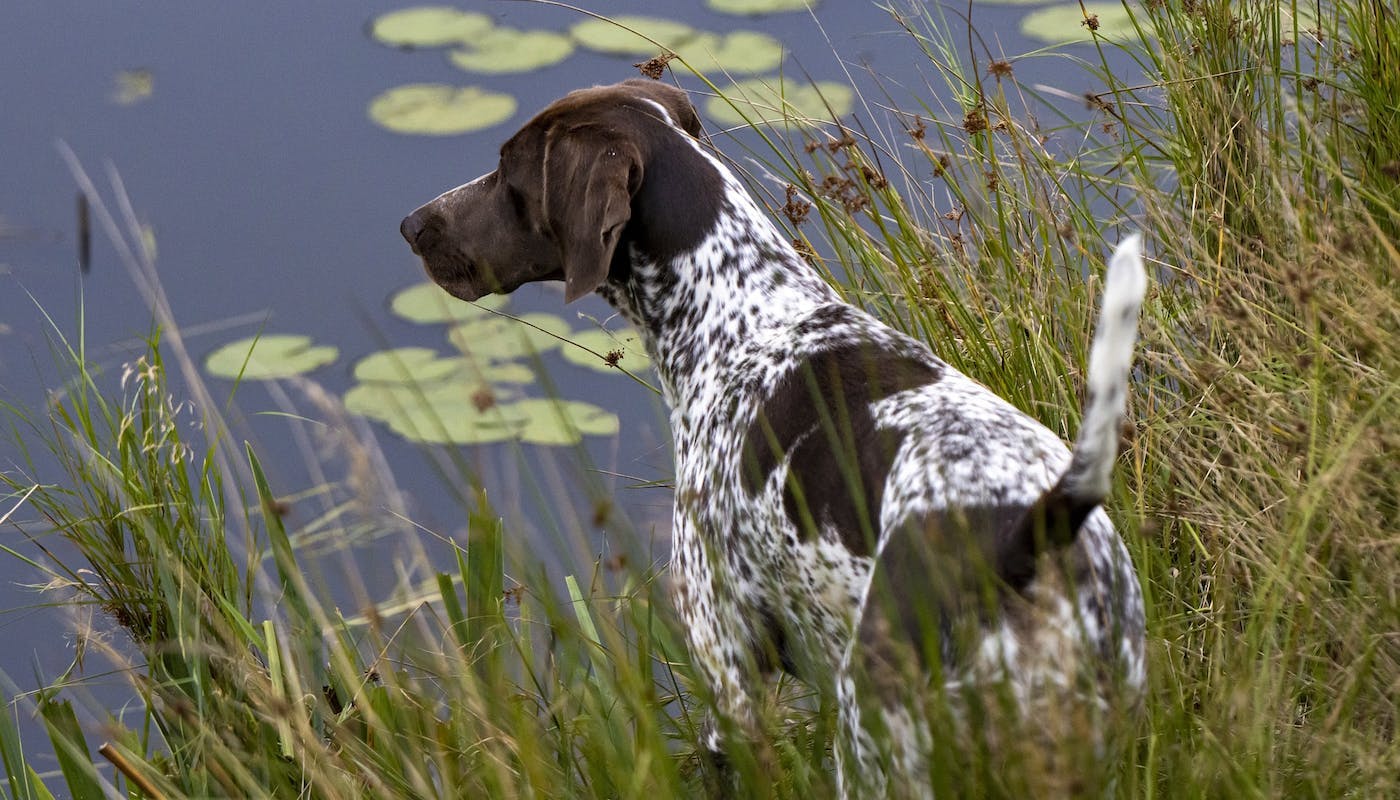How Can I Keep My Dog Safe from Blue Green Algae?
Found in the still, warm waters in lakes and around the shoreline, blue green algae are highly dangerous to dogs. These tiny cells are not true algae – they’re actually cyanobacteria, which release a toxic chemical after ‘blooming’. They can seriously affect our dogs, so here’s all you need to know about spotting and avoiding blue green algae.
First, What Is Blue Green Algae?
Blue green algae are bacteria which emerge in stagnant water. They can poison dogs, with the first symptoms being vomiting, diarrhoea, fatigue, or seizures. Later problems can include heart or organ failure – it’s a dangerous substance.
Blue green algae are toxic for people (especially children) at 8 particles per billion but can be toxic for dogs at a lower rate of 0.8 particles per billion.
Blue green algae typically emerge after a heatwave or hot summer and they multiply quickly. Once the bloom dies back, it can begin to release a toxin called microcystin. That’s where the danger to dogs is contained.
Where Do Blue Green Algae Occur?
Blue green algae like warm, still conditions. The blooms are found in ponds, lakes, and beach shallows – particularly after a hot spell during the summer. Because it isn’t a plant and doesn’t have roots, it is often moved by wind and currents across lakes and ponds.
Blue green algae need nutrients to grow and bloom. These nutrients can come from sources such as lawn feed, garden fertilizer, grass clippings, animal feces, water runoff, and leaking sewage.
How to Identify Blue Green Algae
There are many kinds of algae which float in our lakes and ponds, and several are harmless. In fact, regular algae play a significant role by photosynthesising oxygen, and are at the base of many food chains. Growing across the surface of a pond, they can even protect the underwater life from predators.
So what do cyanobacteria look like? Blue Green Algae are often described as making the water look like pea soup, although it can occur in different colors. It’s not a real ‘algae’ and doesn’t look like a plant form. It blooms and swirls, sometimes giving a marbled effect to the water surface.
Here are clues that you have not found blue green algae:
- Blue Green Algae make the water murky; they are microscopic, which means you won’t see definable leaves or cells. (Clusters of tiny leaves could be Duckweed.)
- Blue Green Algae blends in with the water and does not drape in fibers over a stick. (Could be regular green algae.)
- Blue Green Algae aren’t yellow or granular, either. (This could be tree pollen, scattered on the water surface.)
Symptoms of Blue Green Algae Poisoning in Dogs
Swimming in blue green algae isn’t the problem – but swallowing the water or licking themselves afterwards can give your dog severe poisoning.
Symptoms can start quickly – within minutes – or days after exposure. They range from tiredness, vomiting and diarrhea to more serious issues such as raised blood pressure, breathing difficulties, and seizures. Ultimately blue green algae, like other poisons, can cause organ failure. So if you suspect your dog’s been exposed to it, you should get veterinary advice right away.
What to Do if You See Blue Green Algae
If the water at your dog’s favorite swimming spot has a green, murky appearance which does not appear to be caused by plant growth, you are right to be suspicious. Keep your dog away from the water (drinking or swimming) and don’t touch it yourself, either – blue green algae also cause danger to humans.
If you see a suspected case of blue green algae, it is also important to report your findings to the public health authorities. You can find a helpful guide which shows the right contact details, state by state, herehttps://www.epa.gov/cyanohabs/state-habs-resources.
How To Prevent Blue Green Algae
If you have ever had blue green algae in your pond, you can take steps to ensure it doesn’t return when the temperature rises.
- Aerate your pond using a fountain or water feature.
- Prevent water from running into the pond (bringing debris) by using barrels to collect rainwater beneath gutters.
- Likewise, natural plants around the pond can filter water that drains towards it.
- Make sure that you remove cut grass after trimming lawns.
- Rake leaves in fall to reduce leaf mold.
- Choose a phosphorus-free fertilizer for lawn and garden.
- Pick up pet waste frequently.
- If there is a high risk, consult a professional who can recommend a water treatment to reduce the amount of phosphorus and other nutrients which algae feed on.
